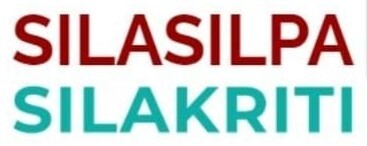The Dharma Chakra in the Digital Age: Ancient Wisdom for Modern Challenges
The Dharma Chakra in the Digital Age: Ancient Wisdom for Modern Challenges
We're living in extraordinary times. Historians may someday call this the Great Unraveling—when shared narratives dissolved and truth became a choose-your-own-adventure story. Consider our current reality:
Facts compete with feelings as the basis for decision-making
Deep fakes and AI-generated content blur the line between authentic and artificial
Trust in institutions has plummeted while belief in conspiracy theories has surged
People increasingly retreat into echo chambers that confirm existing beliefs
Attention has become the most manipulated human resource on the planet
This isn't just about technology—it's about a fundamental shift in how we establish what's real, who belongs, and what matters. The Buddha addressed similar human tendencies toward delusion and tribalism when he first turned the wheel of Dharma at Sarnath centuries ago.
If you've seen India's flag, you've seen the Dharma Chakra—it's right there in the center. But this isn't just national symbolism; it's a philosophical powerhouse.
The wheel appears throughout Indian traditions. In Buddhism, it represents Buddha's first teaching and the cycle of rebirth. In Hinduism, it's often associated with Vishnu and cosmic order. Emperor Ashoka loved it so much he put it on pillars across his empire in the 3rd century BCE.
Here's why this ancient symbol speaks so powerfully to our post-truth moment:
It embodies paradox – The hub remains completely still while the rim moves at maximum speed. In our world of constant change, we too need fixed principles amid the chaos.
It represents natural law – A wheel functions according to physical principles, not opinions or preferences. Similarly, certain truths persist regardless of our beliefs about them.
It requires balance – If any section of the wheel is damaged or distorted, the entire structure wobbles. Like our information ecosystems, integrity of the whole depends on every part.
The 24 spokes traditionally represent the interconnection of all things—reminding us that no perspective exists in isolation, and that actions in one area inevitably affect the whole.
Let's be honest about where we stand:
Truth has become tribal. "Do your own research" has morphed from scientific principle into permission to reject expertise and embrace confirmation bias. When we can't agree on basic facts, how do we solve complex problems together?
Vulnerability has been weaponized. Our natural human longing for belonging and meaning makes us susceptible to manipulation. Those feeling most disconnected often fall hardest for extremist ideologies promising purpose and community.
Relationships fracture along reality lines. Families can't discuss politics at holiday dinners. Friendships end over divergent beliefs. Communities that once united around shared concerns now splinter over competing narratives.
The attention economy prioritizes outrage over understanding. Nuance doesn't generate clicks. Complexity doesn't go viral. Our information environment now optimizes for emotional reaction rather than thoughtful reflection.
So how might ancient wheel wisdom guide us through this landscape of competing truths and fraying connections?
The wheel offers powerful metaphors for our disoriented era:
The Perspective Wheel: Standing outside a wheel, you can see both sides simultaneously. Similarly, the most valuable thinking today requires holding multiple perspectives at once—not to conclude "both sides are equal," but to understand the complete picture.
The Contact Point: A wheel touches ground at exactly one point—the present moment where theory meets reality. When abstract beliefs meet concrete consequences, truth often reveals itself. Watch for those moments of contact.
The Balanced Rotation: A wheel works smoothly only when properly balanced. In our consumption of information, balance doesn't mean equal time to all viewpoints regardless of evidence, but rather proportional attention based on credibility and consequence.
The Dharma Chakra reminds us that movement can be purposeful without being linear. In a culture obsessed with taking sides and pushing forward at all costs, the wheel suggests another possibility: integration that honors multiple truths while still adhering to underlying principles.
I'm not claiming perfect balance. I still catch myself dismissing perspectives that challenge my worldview. I still feel the pull toward comforting certainties rather than uncomfortable complexities. But the image of the wheel helps me recognize when I'm wobbling off center.
Perhaps our greatest challenge isn't choosing between competing versions of reality, but developing the stability to hold paradox—to keep our wheels turning smoothly even on uneven ground. The ancient and contemporary don't have to oppose each other. Maybe they're just different points on the same wheel, coming around again to teach us what we need to know..




